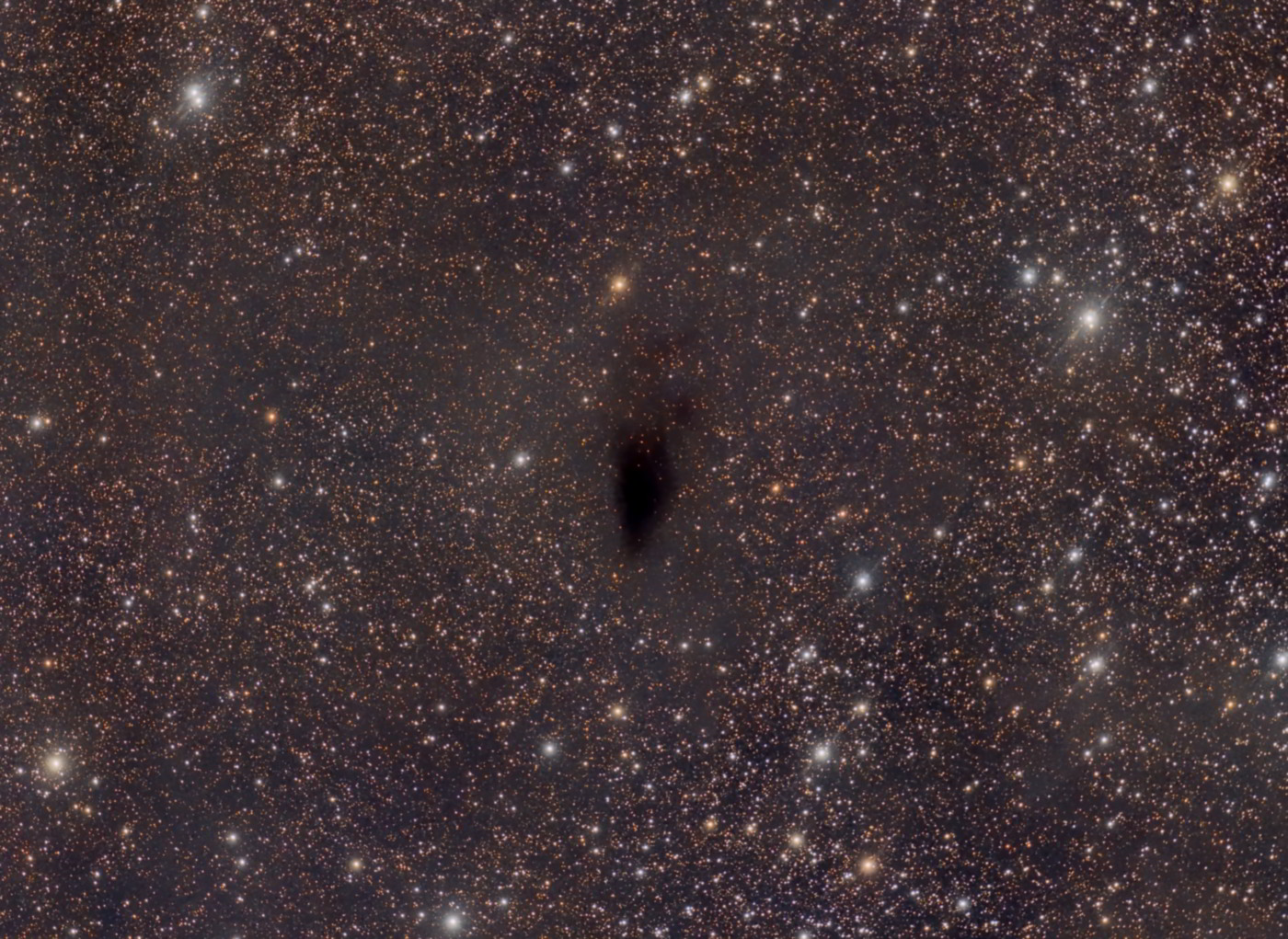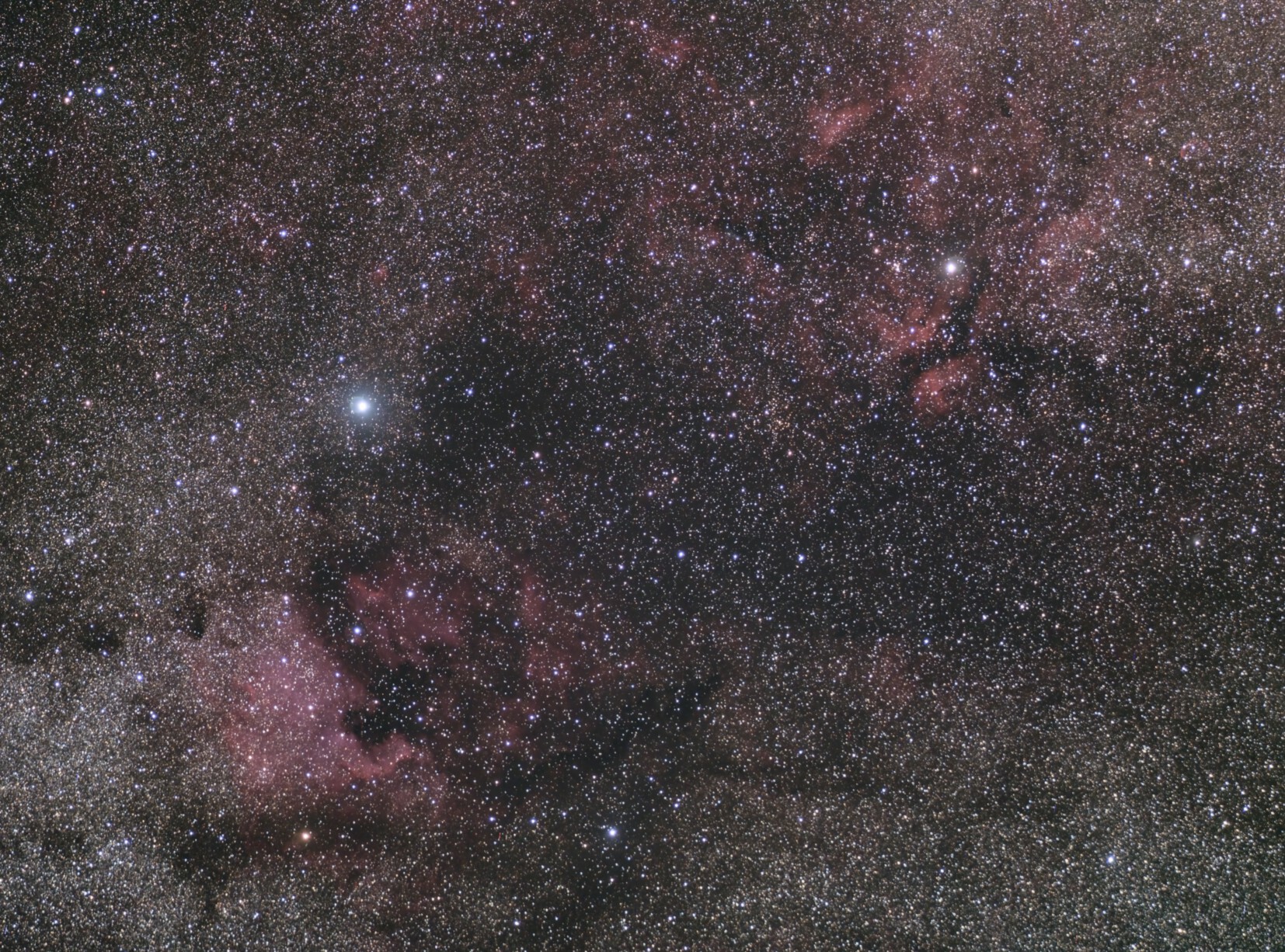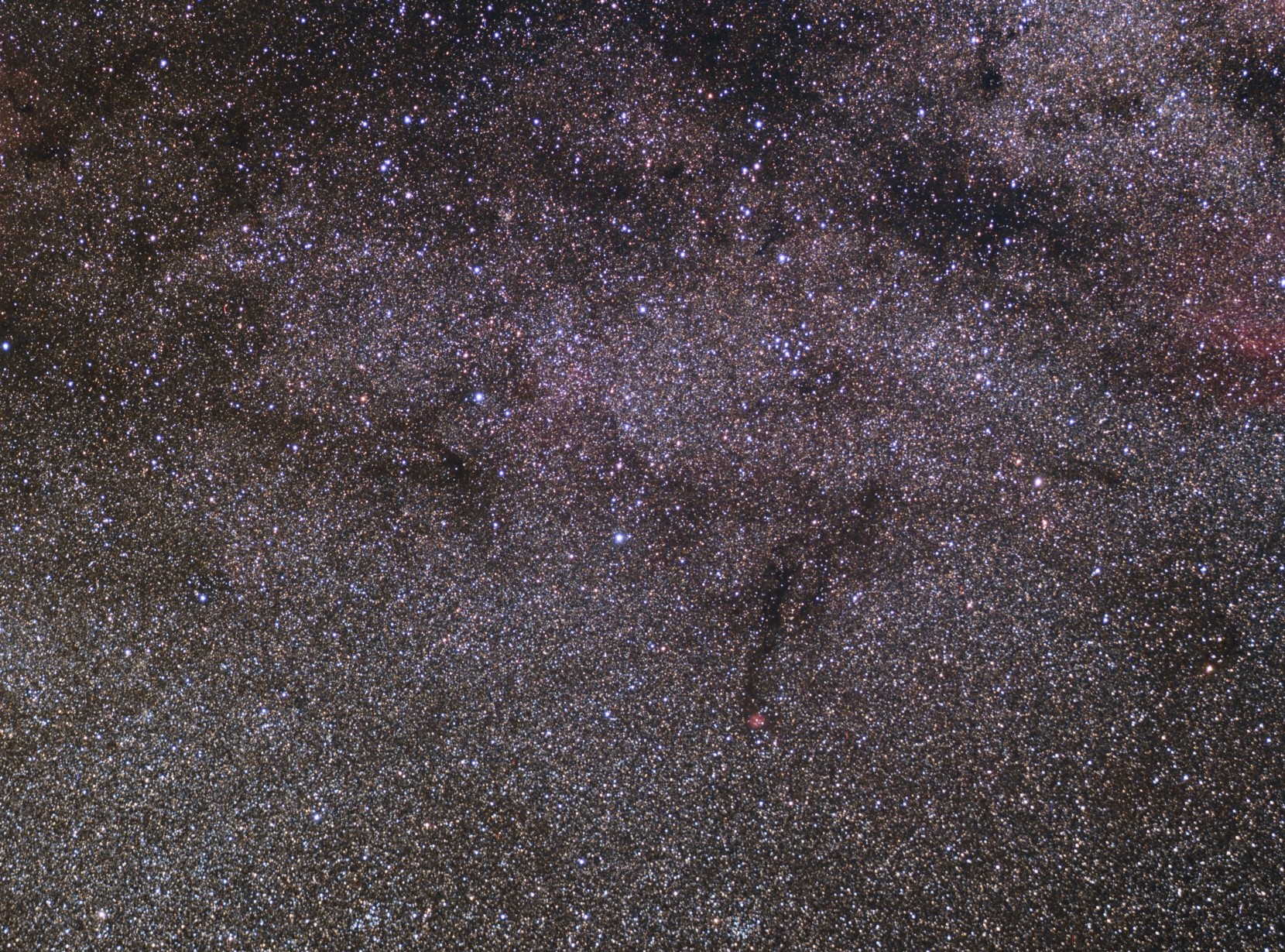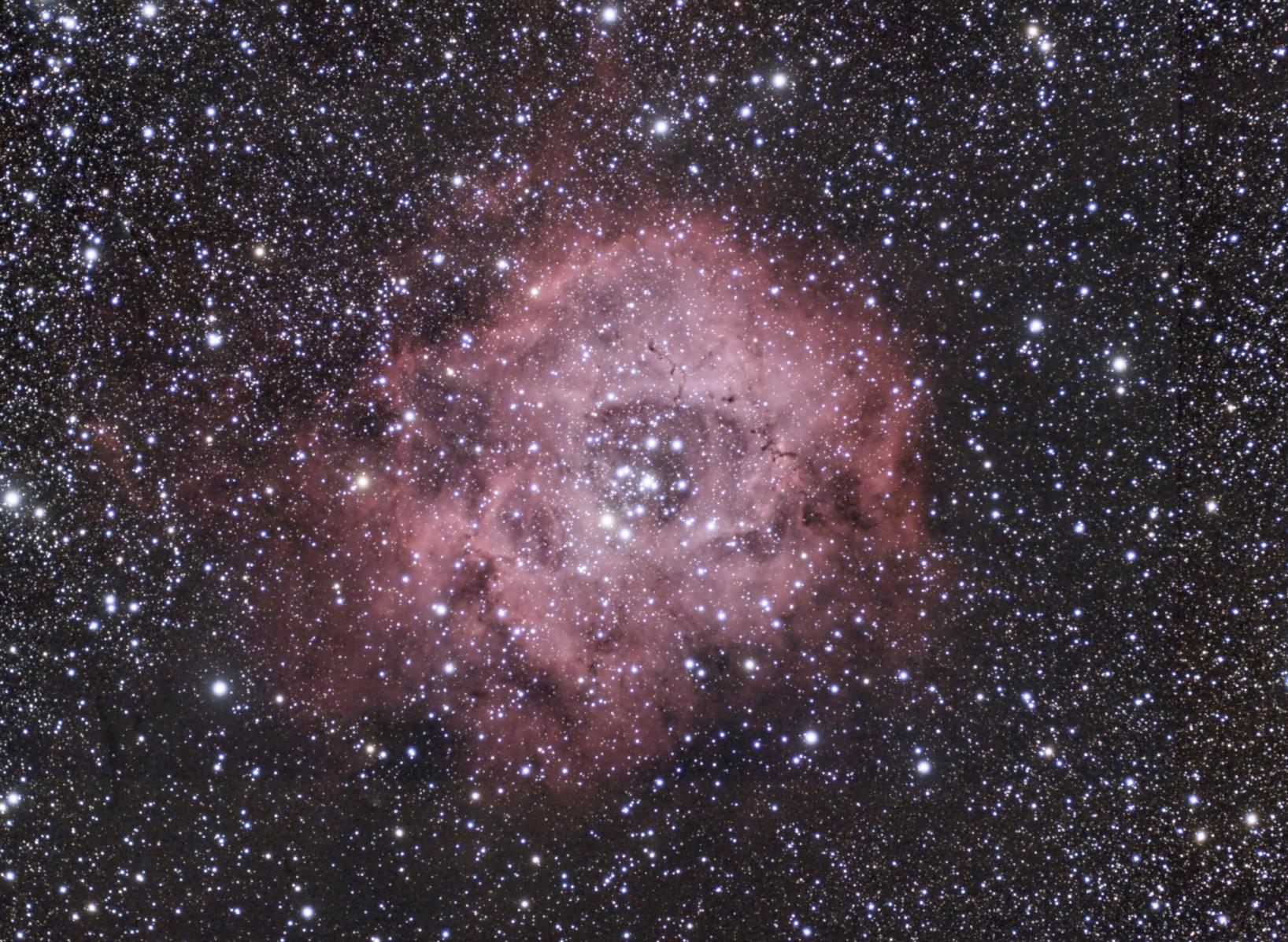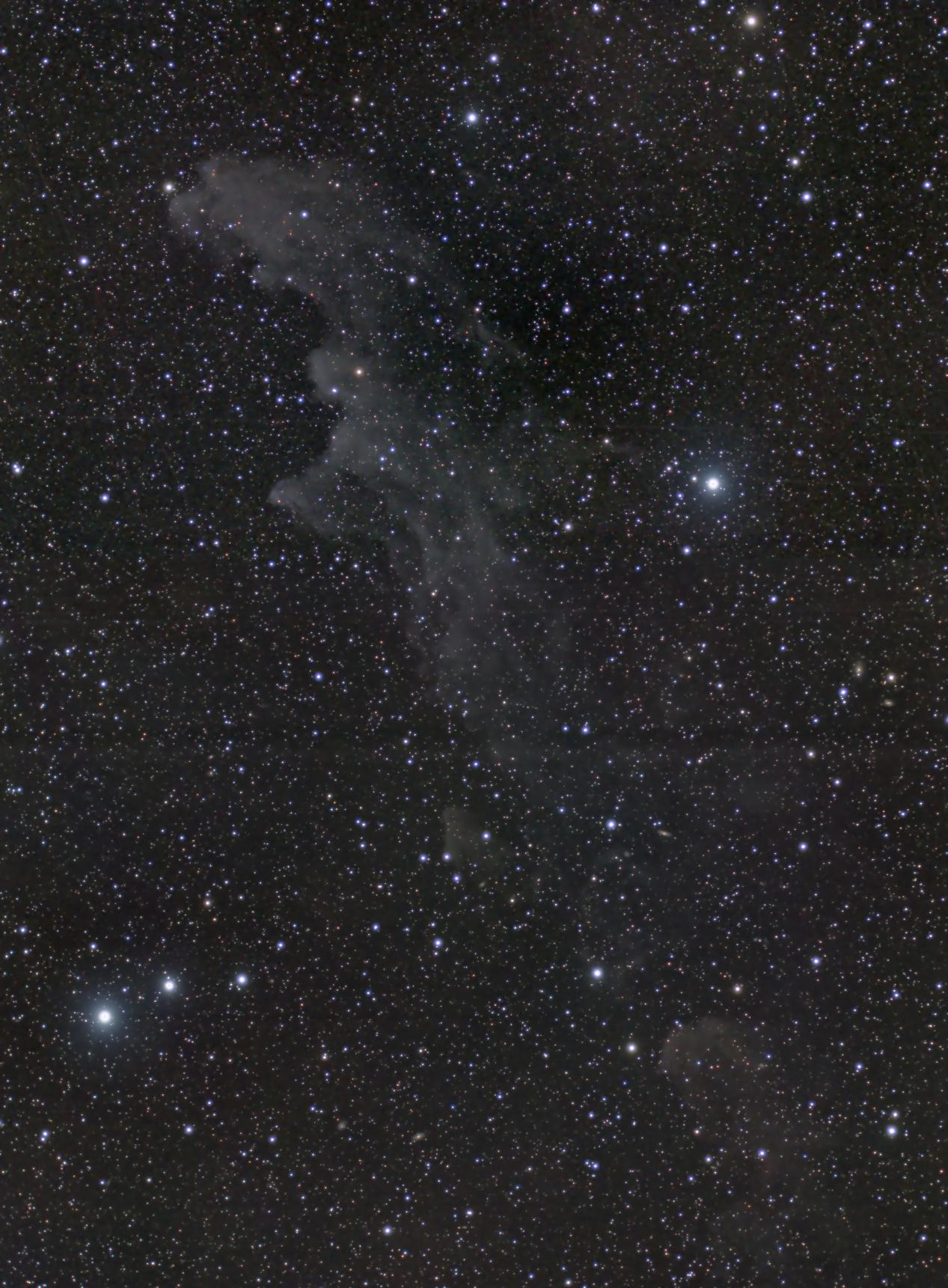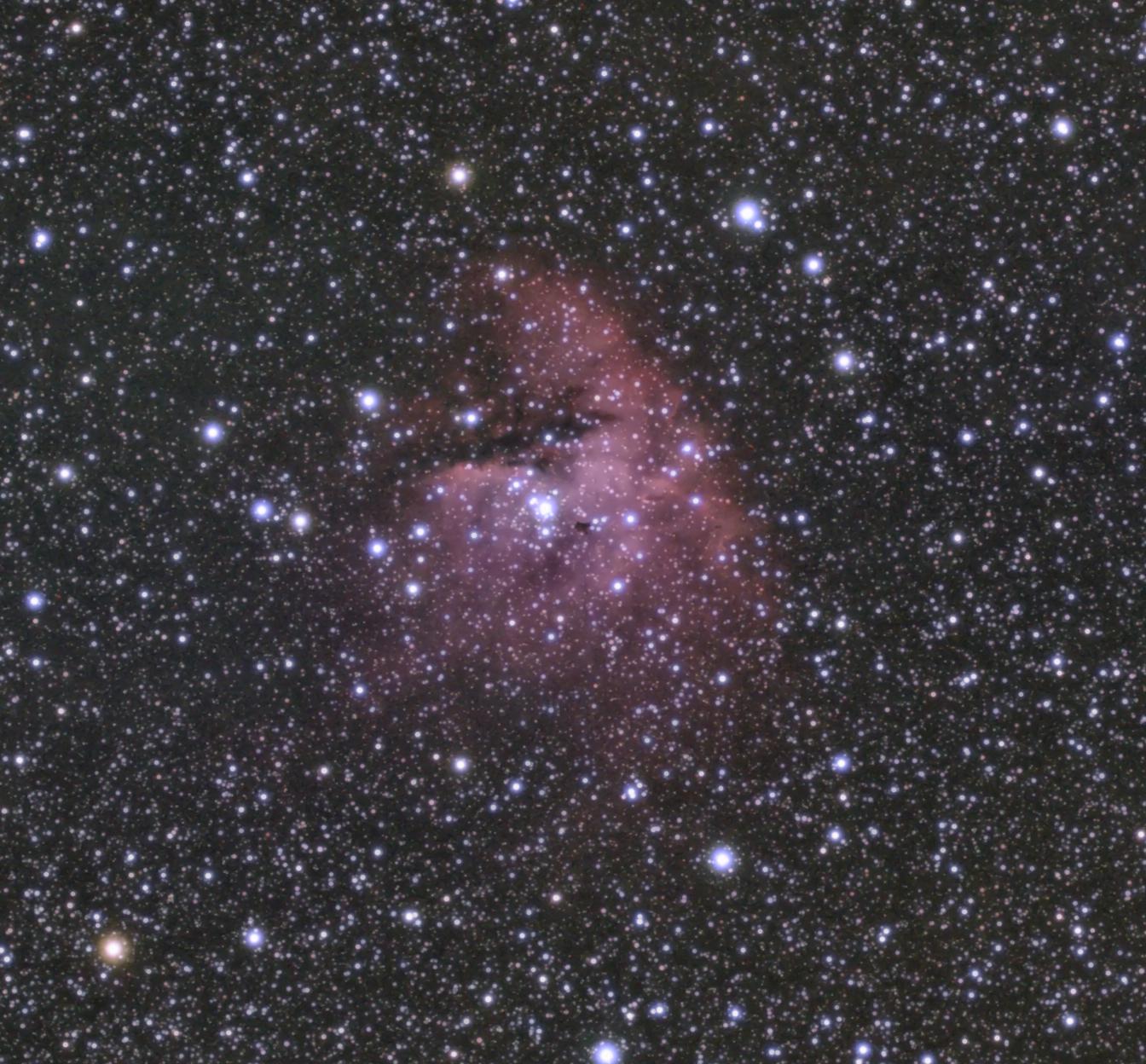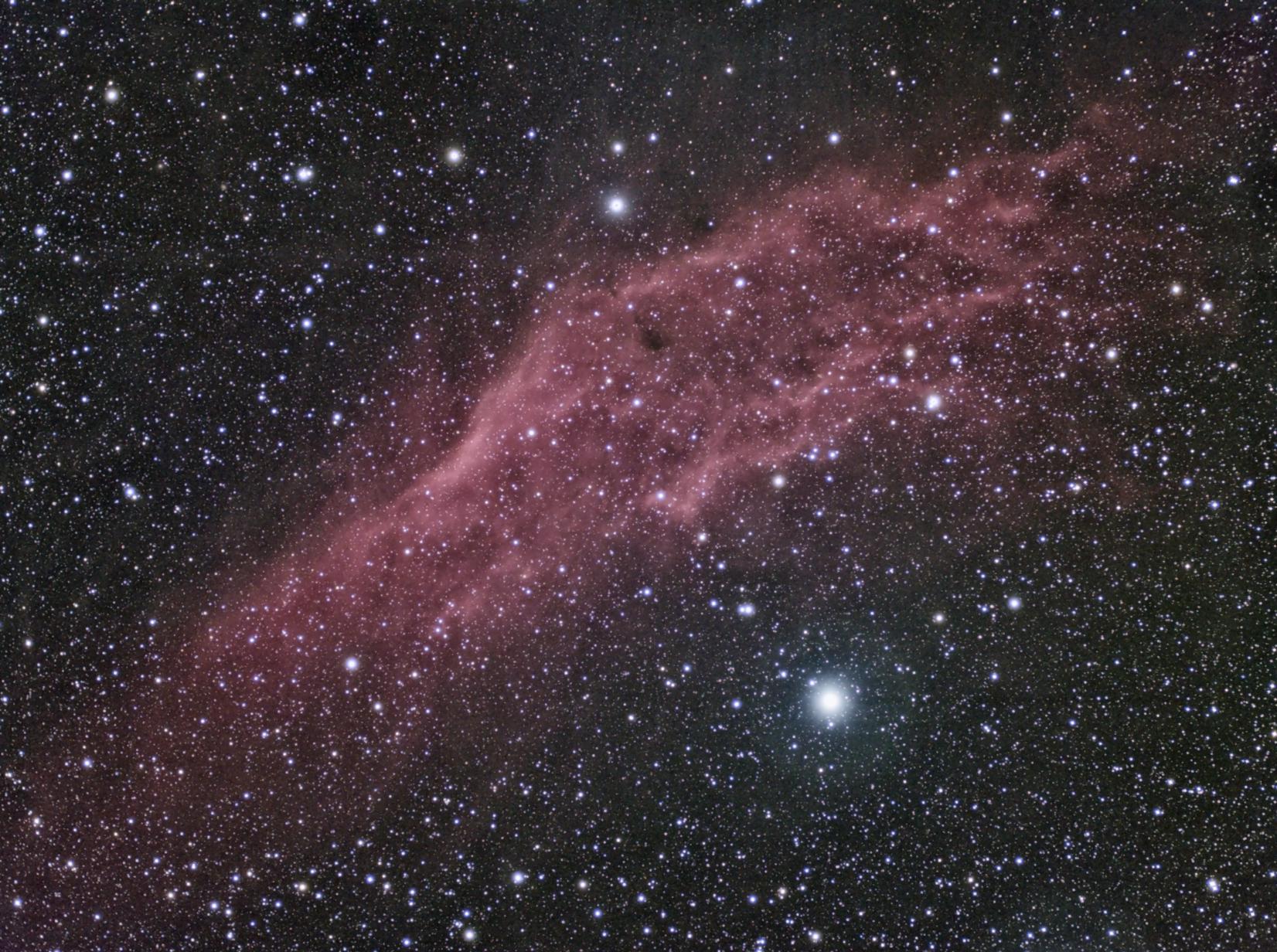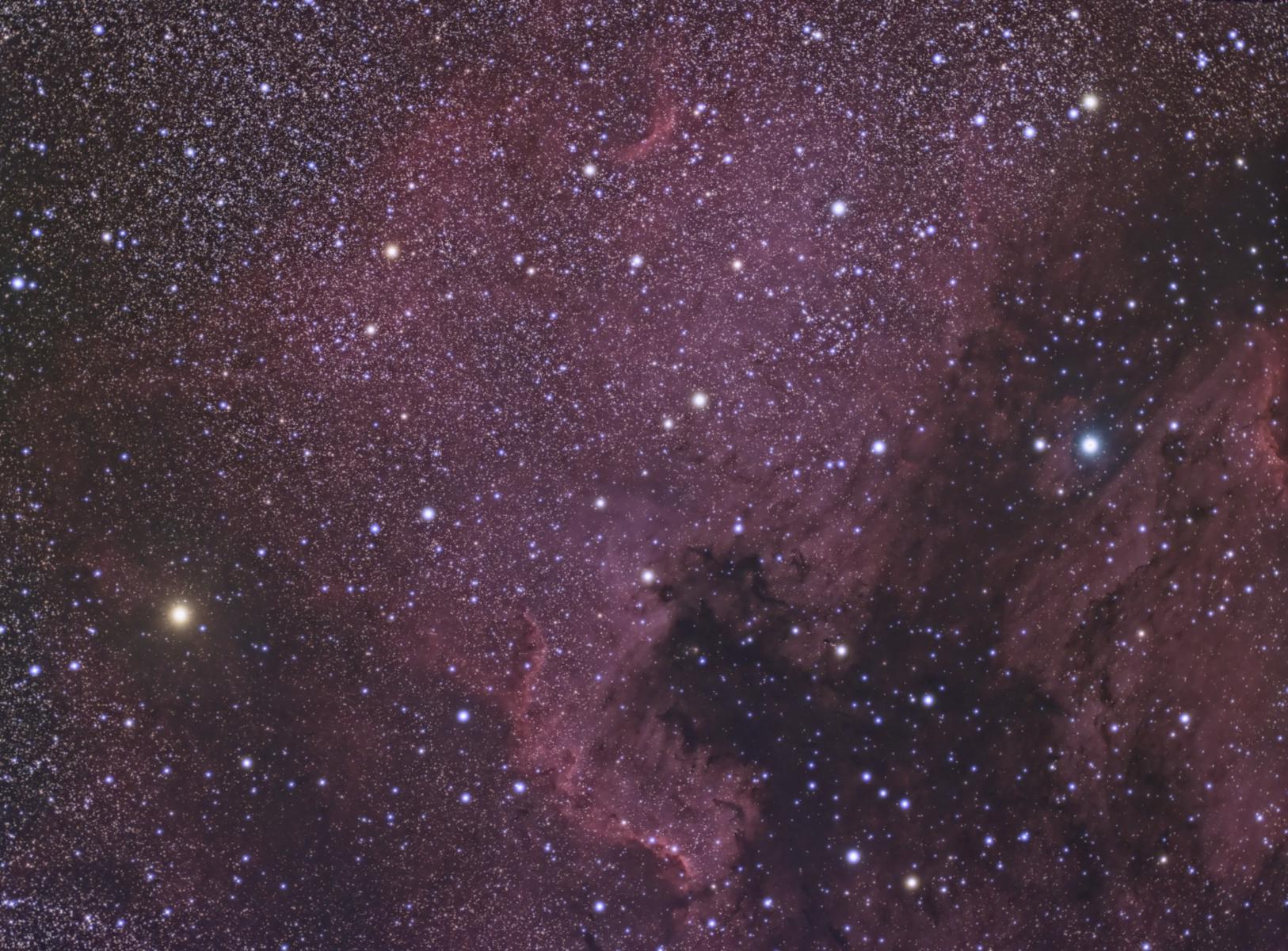I haven’t posted here for a while now. I post most initial looks at data sets on the Breckland Facebook page so this is the place to visit for the most up to date information. However, I will endeavour to keep this page reasonably current.
Last Saturday evening was crisp and clear with a waning moon. As I have an interest in dark dusty things I selected Barnard 15 as the target. Outside of the main plane of the Milky Way, this dark nebula is very black and sharply defined against a background of uniformly bright stars. Also in the frame are Barnard 16 & 17 along with much fainter dust clouds.
The lack of stars in front of B15 indicate that it’s pretty close to us. These clouds are dark due to the presence of sub-micrometre dust particles coated in frozen nitrogen and carbon monoxide. Also present is molecular hydrogen, atomic helium and C18O along with a cocktail of exotic molecules.
This is an update of the image I posted on Facebook with a more aggressive noise reduction process early in processing. Consequently, I’ve been able to stretch the contrast more to emphasise the fainter dust structures and apply a stronger colour saturation to the stars.
37 individual exposures of 10 minutes each were gathered before the moon rose for a total of a little over 6 hours.
